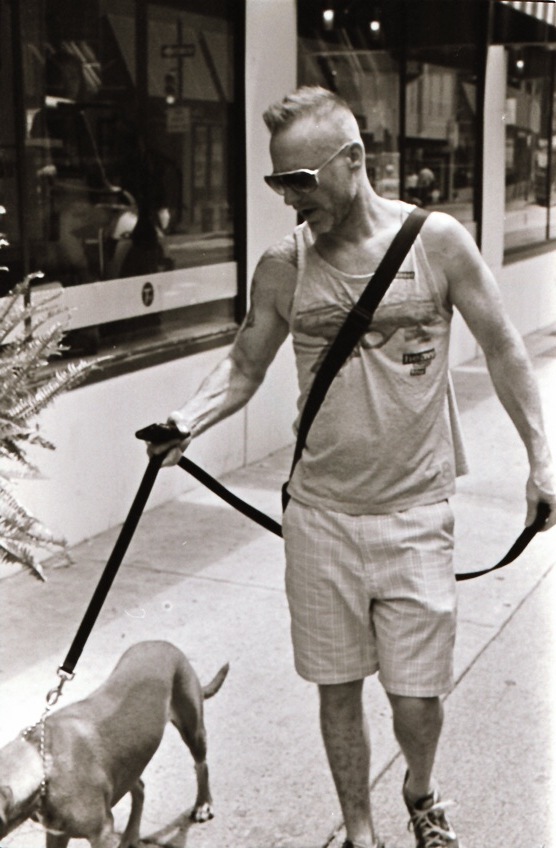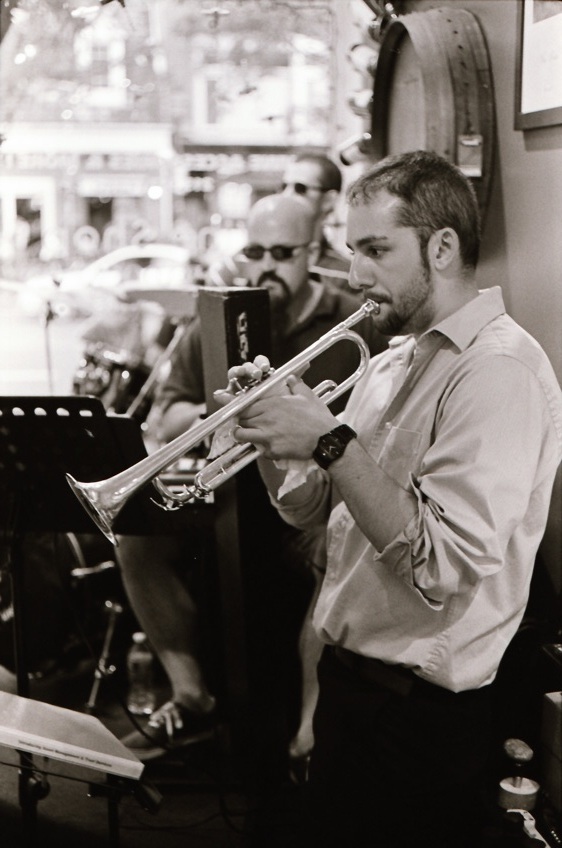zauhar
Veteran
I haven't read a lot on RFF about the Canon 9000 flatbed. Since I asked for (I got one) for my birthday, I thought I would put up some first scans and comments.
It's easy to use - has film holders for 35mm negatives and slides and 120 film. Bundled software is clunky and light on features, but there is an "automatic" mode which is easy - load two strips of 6 frames (35mm) and click a button. The scans below are "raw" jpegs with no additional processing.
These were scanned at 4800 DPI (I think, the interface does not provide very good feedback as to what options are actually in effect), and took 15-20 minutes for 12 frames.
All photos with M3/50mm summicron DR, legacy (neopan) 400 film.
I think these look pretty good, although there is not a lot of detail in shadows. I would appreciate any comments and suggestions.
I will post separately a comparison with photo lab scanning of color negatives, and the 9000 - in that case the raw scanner output is miserable by comparison (very dim). I have seen many references to Vuescan, and will consider that as an alternative to the bundle app.
Randy





It's easy to use - has film holders for 35mm negatives and slides and 120 film. Bundled software is clunky and light on features, but there is an "automatic" mode which is easy - load two strips of 6 frames (35mm) and click a button. The scans below are "raw" jpegs with no additional processing.
These were scanned at 4800 DPI (I think, the interface does not provide very good feedback as to what options are actually in effect), and took 15-20 minutes for 12 frames.
All photos with M3/50mm summicron DR, legacy (neopan) 400 film.
I think these look pretty good, although there is not a lot of detail in shadows. I would appreciate any comments and suggestions.
I will post separately a comparison with photo lab scanning of color negatives, and the 9000 - in that case the raw scanner output is miserable by comparison (very dim). I have seen many references to Vuescan, and will consider that as an alternative to the bundle app.
Randy





aldobonnard
Well-known
Hi
I am using the Canon 9950F. The Canon software is straightforward but does not reveal all the D-range of a BW or Colour negative.
I found Vuescan works much better as regards results and picture quality, and I am now using it with multiexposure ticked, as a must.
Have a try and compare, perhaps.
I am using the Canon 9950F. The Canon software is straightforward but does not reveal all the D-range of a BW or Colour negative.
I found Vuescan works much better as regards results and picture quality, and I am now using it with multiexposure ticked, as a must.
Have a try and compare, perhaps.
Harry S.
Well-known
I use the 8800F and find the Canon software acceptable. I tried Vuescan based on all the rave reviews and I found that much more clunky and not at all user friendly!
joeswe
Well-known
HI,
I have been using the 9000f for some months now. I found that the Canon software is good for beginners, as it gives relatively nice out of the box result with little post-processing required. When scanning colour negatives, the results also depend on the type of film used. E.g. the new Kodak Portras seem to give very nice results with default settings (all "image enhacements" turned off). Some of the Fuji films (not all) tend to scan with a bit of a magenta cast that is difficult to remove. I usually turn off all the auto features except for some minor amount of auto color correction in some cases. The resulting scans are mostly pleasing, but rather soft, some sharpening in Photoshop with unsharp mask is required, especially for 35mm. For maximum quality (within the limits the Canon presents, of course) and with difficult negatives/positives I prefer to use Silverfast, making use of the HDR option etc. It is generally recommendable not to use the auto image enhancement within the Canon software, but rather apply the necessary tools in Photoshop. Also, my impression is that with the "max quality" setting in ScanGear, quality does not improve but actually worsens, so I make sure to have this turned off all the time.
Remember that the 9000fs effective (real world) resolution is faaaaar away from what the spec sheet claims, probably somewhere around 1600 ppi. To get the maximum resolution in a reasonably sized file, you have to scan with the highest resolution, which results in a big file and then downsample the resulting image in Photoshop to around 1800 ppi to get rid of all the "noise". However, for me the resulting difference in quality is not big enough to justify all this trouble so I prefer to scan at 1800 ppi max in the first place.
I use the 9000f in 35mm mainly for digital "contact sheets" at 1200 ppi, because it's much quicker and gives better results with the standard settings than my dedicated film scanner will (Reflecta Proscan).
However, the scan quality in 35mm is no match for the scans from even a modest dedicated film scanner like the Reflecta, when proper scanning technique and post processing are applied. The difference in image quality (especially sharpness and Dmax) is obvious.
Of course the results with MF film with the Canon are much better when compared to the 35mm scans and and are quite usable for prints. Still, sharpening in post processing is required in most cases. As with 35mm, my impression is that scanning MF film with more than 1600 ppi makes little sense, you are pushing the limits of the optical system of the scanner here.
These are just my personal impressions from working with the 9000f, others may of course disagree. Hope this helps,
john
I have been using the 9000f for some months now. I found that the Canon software is good for beginners, as it gives relatively nice out of the box result with little post-processing required. When scanning colour negatives, the results also depend on the type of film used. E.g. the new Kodak Portras seem to give very nice results with default settings (all "image enhacements" turned off). Some of the Fuji films (not all) tend to scan with a bit of a magenta cast that is difficult to remove. I usually turn off all the auto features except for some minor amount of auto color correction in some cases. The resulting scans are mostly pleasing, but rather soft, some sharpening in Photoshop with unsharp mask is required, especially for 35mm. For maximum quality (within the limits the Canon presents, of course) and with difficult negatives/positives I prefer to use Silverfast, making use of the HDR option etc. It is generally recommendable not to use the auto image enhancement within the Canon software, but rather apply the necessary tools in Photoshop. Also, my impression is that with the "max quality" setting in ScanGear, quality does not improve but actually worsens, so I make sure to have this turned off all the time.
Remember that the 9000fs effective (real world) resolution is faaaaar away from what the spec sheet claims, probably somewhere around 1600 ppi. To get the maximum resolution in a reasonably sized file, you have to scan with the highest resolution, which results in a big file and then downsample the resulting image in Photoshop to around 1800 ppi to get rid of all the "noise". However, for me the resulting difference in quality is not big enough to justify all this trouble so I prefer to scan at 1800 ppi max in the first place.
I use the 9000f in 35mm mainly for digital "contact sheets" at 1200 ppi, because it's much quicker and gives better results with the standard settings than my dedicated film scanner will (Reflecta Proscan).
However, the scan quality in 35mm is no match for the scans from even a modest dedicated film scanner like the Reflecta, when proper scanning technique and post processing are applied. The difference in image quality (especially sharpness and Dmax) is obvious.
Of course the results with MF film with the Canon are much better when compared to the 35mm scans and and are quite usable for prints. Still, sharpening in post processing is required in most cases. As with 35mm, my impression is that scanning MF film with more than 1600 ppi makes little sense, you are pushing the limits of the optical system of the scanner here.
These are just my personal impressions from working with the 9000f, others may of course disagree. Hope this helps,
john
Last edited:
Share:
